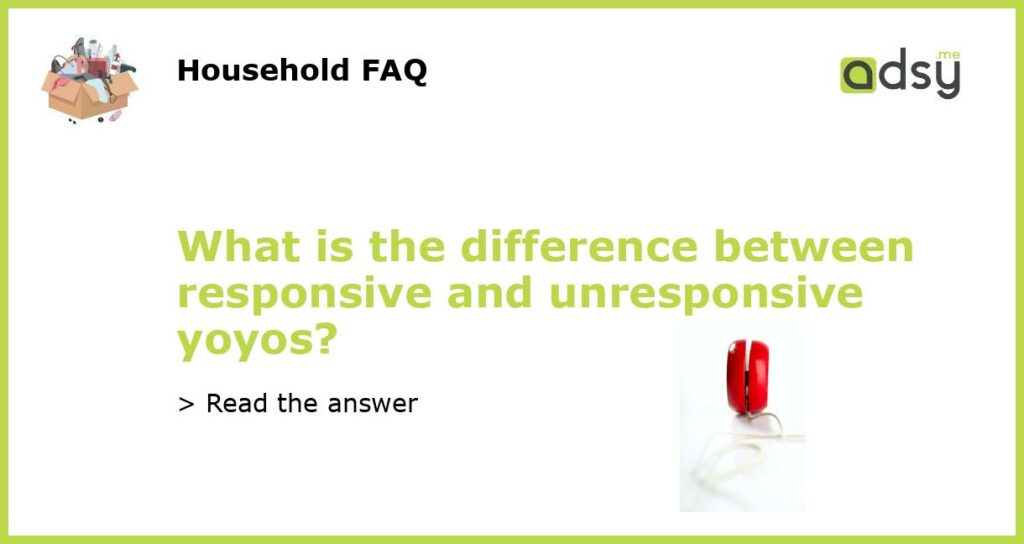Responsive vs Unresponsive Yoyos: Understanding the Difference
Yoyos have been a beloved toy for generations, capturing the imagination and dexterity of people of all ages. There are two main types of yoyos – responsive and unresponsive. In this article, we will explore the differences between these two types and their implications for players. Whether you are a seasoned yoyo expert or just starting out, it’s important to understand these distinctions before making a purchase.
Responsive Yoyos: Bringing Back the Classic
Responsive yoyos are often referred to as “beginner” or “traditional” yoyos. These are designed to easily return to the player’s hand when tugged. This feature is achieved through the use of a “responsive” bearing, which creates enough friction to enable the yoyo to wind back up. The responsive nature of these yoyos makes them easier to control, making them ideal for beginners learning basic tricks.
One of the key benefits of responsive yoyos is their simplicity. Players can quickly learn basic tricks such as the “sleeper” and “forward pass” without worrying about complicated string manipulation or advanced techniques. This simplicity also makes responsive yoyos great for younger players or those who prefer a more laid-back yoyo experience.
Responsive yoyos also tend to have a narrower gap between the two halves of the yoyo, which means the string is less likely to become tangled during play. This can be especially helpful for beginners who are still mastering their control and accuracy with the yoyo.
Unresponsive Yoyos: Taking Tricks to the Next Level
Unresponsive yoyos, on the other hand, are designed for more advanced players looking to push the boundaries of yoyo tricks. Unlike responsive yoyos, unresponsive yoyos do not automatically return to the player’s hand when tugged. This is achieved through the use of a “unresponsive” bearing, which reduces friction and allows the yoyo to spin freely on the string.
The unresponsive nature of these yoyos opens up a world of possibilities for advanced tricks. Players can perform intricate string manipulations, complex mounts, and even combine multiple yoyos for dazzling displays of skill. With practice and skill, unresponsive yoyos can achieve long spin times and enable players to perform tricks that were once thought impossible.
While unresponsive yoyos offer greater versatility and challenge, they do require more skill to use effectively. Players must learn techniques such as binding, which involves wrapping the string around the yoyo to create enough friction for it to return to the hand. This additional level of control and trick execution can be daunting for beginners, but rewarding for experienced players looking to take their yoyo skills to new heights.
Choosing the Right Yoyo for You
When deciding between a responsive and unresponsive yoyo, it’s essential to consider your skill level and goals as a player. If you are just starting out or prefer a more casual yoyo experience, a responsive yoyo is likely the best choice. It will provide an easier learning curve and allow you to perform basic tricks with ease.
On the other hand, if you’re an experienced player looking to challenge yourself and learn advanced tricks, an unresponsive yoyo is the way to go. Although it may be more difficult to master initially, the versatility and possibilities they offer make it worth the effort.
In conclusion, the main difference between responsive and unresponsive yoyos lies in their ability to return to the player’s hand. Responsive yoyos are designed for beginners, with features that make them easier to control and perform basic tricks. Unresponsive yoyos, on the other hand, offer advanced players more freedom and versatility to perform complex tricks. By understanding these differences and considering your own skill level and goals, you can choose the perfect yoyo to enhance your yoyo journey.





